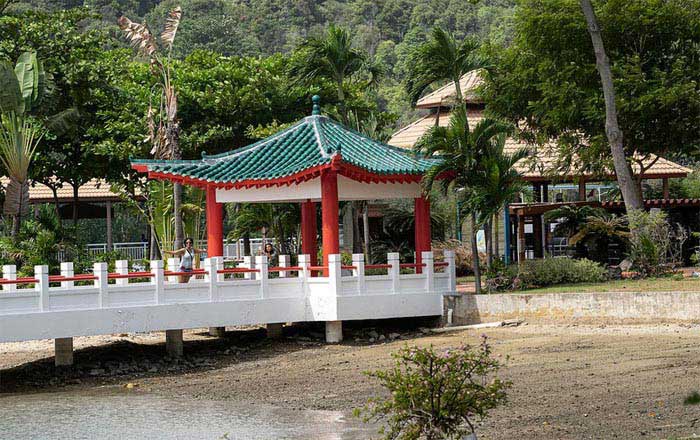Singapore's coastline is dotted with peaceful islands where you won't find a shopping mall in sight. Jump on a boat and travel offshore to enjoy chilled beaches, coastal hikes and an amazing array of flora and fauna. Here's where to escape to when you've had enough of city life.
Pulau Ubin
A mere 15-minute boat ride away from the mainland, travel to Changi Point Ferry Terminal and let a charming old-school bum boat whisk you away to this undeveloped island gem. Ubin is one of the last two remaining kampongs (villages) in Singapore, and is also home to some incredible biodiversity. Travel by foot or rent a bike to explore the island, and stop off at some of its noteworthy sights. The Chek Jawa Wetlands are unmissable and best visited at low tide, where a 1 km boardwalk reveals the millennia-old coral reef below. Make sure you also visit the Pekan Quarry, where the old granite pit has transformed into a beautiful lake, for some insta-worthy shots and a glimpse of rare birdlife.
Kusu Island
Part of the Southern Islands, Kusu is the Singaporean island most steeped in culture. In October, the ninth lunar month, the island transforms itself from a sleepy stop-off with beautiful white beaches, into the destination of a great pilgrimage; where visitors flock to the Da Bo Gong temple to honour the deity known as Tua Pek Kong. The island's religious significance comes from the myth that the deity transformed a tortoise into this island, and hence Kusu is also home to a tortoise sanctuary. Visit Kusu by ferry, which leaves Marina South Pier several times a day - a round trip via St John's Island will only set you back $18 per person.
St John's Island
Close to Kusu, St John's Island also lies to the south of Singapore and has an even more colourful history. Now strictly developed for recreation, in the past the island has played various roles; from a leprosy quarantine centre in the 30s, to a holding centre for political detainees in the 50s, and in the 60s, a rehab centre for people suffering from opium addiction. Aside from its curious past, it's a peaceful place to escape the city, with picnic areas, beautiful and quiet beaches and even a museum, the Sisters' Islands Marine Park Public Gallery, which showcases Singapore's efforts to champion marine biodiversity. Visit by ferry from Marina South Pier.
Lazarus Island
The most deserted of the Southern Islands, Lazarus is perfect for urbanites looking for a secluded getaway. The undeveloped beaches have perfect white sands and turquoise waters, and if you arrive early on a weekday or weekend morning, you'll be sure to have the place to yourself. Only 15 minutes away from Marina South Pier, take the ferry to St John's Island and walk 10 minutes over to Lazarus via a small causeway.
Coney Island
North of Singapore, close to Punggol, is Coney Island. Despite the familiarity of the name, this island is not an amusement park (though it was named that by developers in the 50s who had plans to turn it into one,) but a stunning nature reserve with some of Singapore's most impressive biodiversity. Connected by a causeway, you can reach the island by foot, and once there look out for hidden beaches and try and spot the chickens, otters and monkeys that call the island home. It's recommended to rent a bike to cover the most ground you can, but hop off to wander along the well-paved boardwalks and to sit quietly in one of the bird shelters.
Pulau Semakau
At first thought, Semakau isn't the most appealing of island destinations due to being the home of Singapore's only remaining landfill site. However, Semakau Landfill is only situated on the eastern part of the island, and the western side is one of the most biodiverse and untouched areas of Singapore. The island's waters are home to meadows of rare seagrass and flora and fauna that flourish in the mangrove ecosystem. To visit Semakau, book a tour with the Raffles Museum of Biodiversity Research (part of National University Singapore, or NUS) and be guided around the mangroves and coral nurseries by a local researcher.

